Plan to convert abandoned railroad tracks in Queens into High Line-style park moves forward
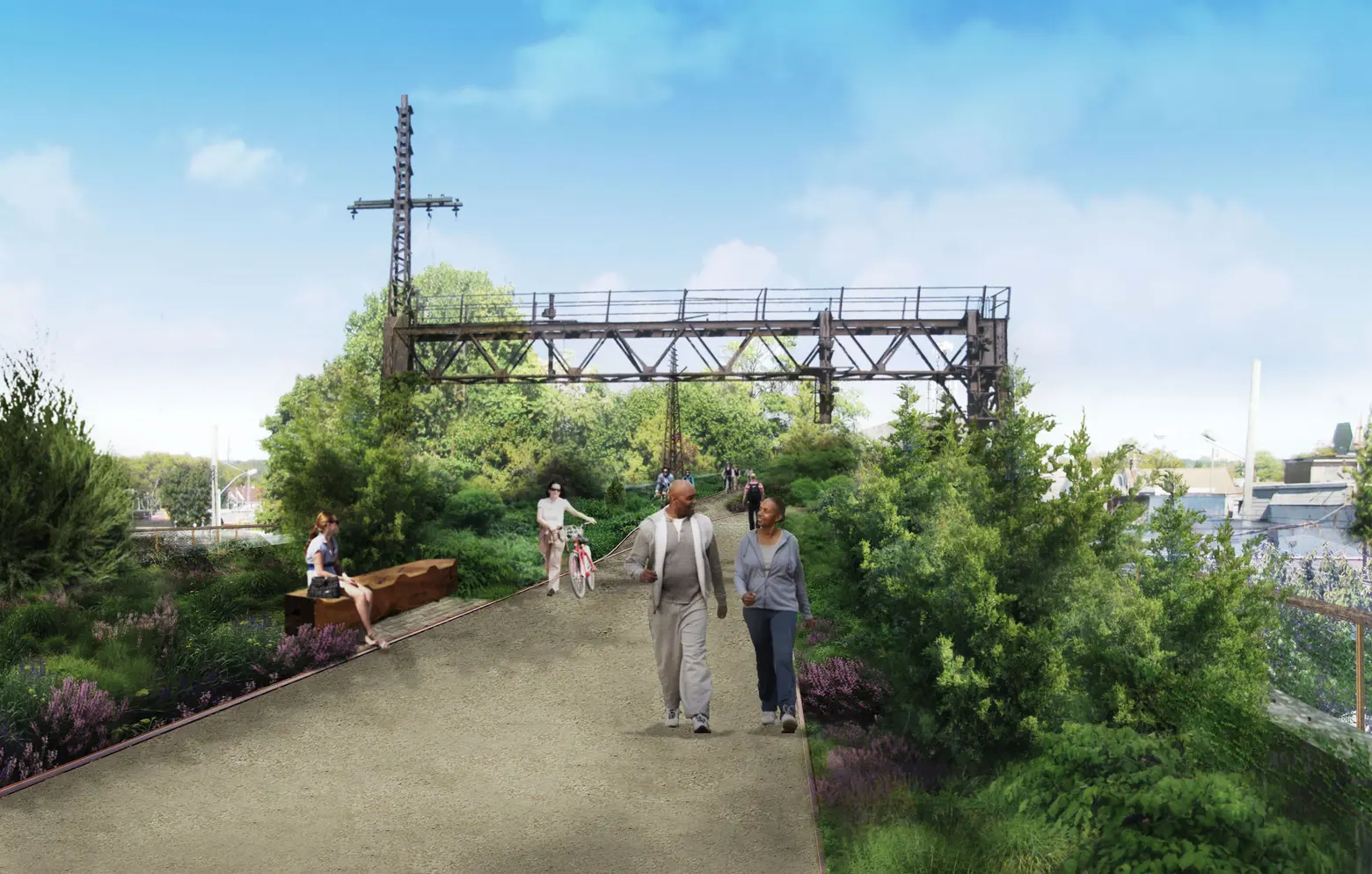
All renderings courtesy of the Trust for Public Land and Friends of the QueensWay
A proposal to convert an abanonded railway in Queens into a public park is moving forward. Mayor Eric Adams on Friday announced a $35 million investment for the first phase of the QueensWay, a High Line-like linear park built on the long-defunct Rockaway Beach Branch Line that will serve the neighborhoods of Rego Park, Forest Hills, Glendale, Forest Park, Woodhaven, and Ozone Park. The city’s investment covers an environmental review and construction of the first phase of the park.
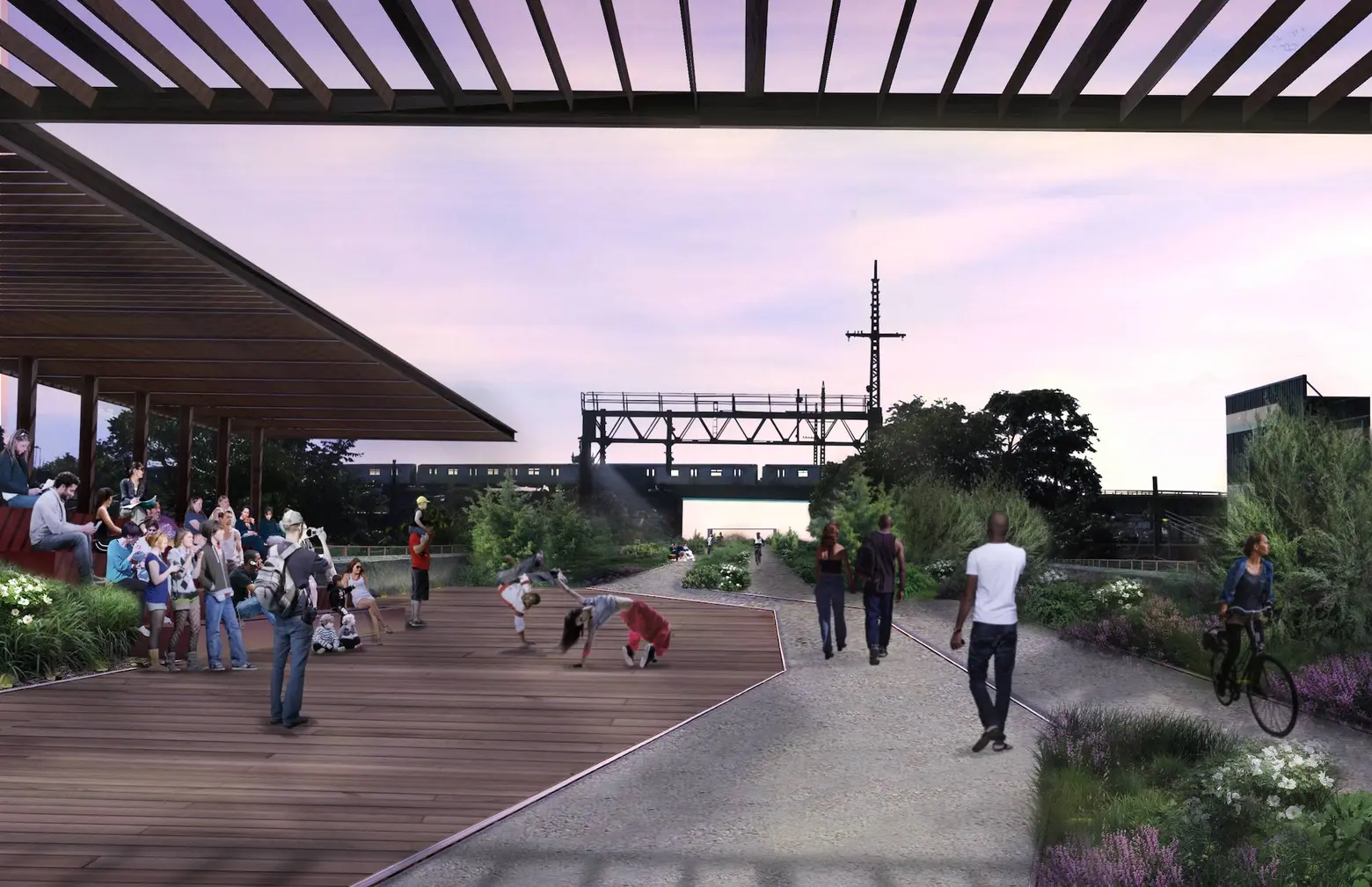
“QueensWay phase one will convert abandoned railroad tracks that have been used as a dumping ground into a linear park that will make this community safer, healthier, greener, and more prosperous,” Adams said in a statement. “The community has been asking for this for decades, and I am proud to stand with them to show how we ‘Get Stuff Done’ for New Yorkers.”
Conceived over the last decade by a group called Friends of the QueensWay and the national nonprofit Trust for Public Land, the QueensWay, upon its completion, will include a 47-acre park and seven miles of greenway built along a section of the Long Island Rail Road vacant for the last 50 years. The project’s first phase, dubbed the Metropolitan Hub, includes five acres of park space and 0.7 miles of greenway in Forest Hills.
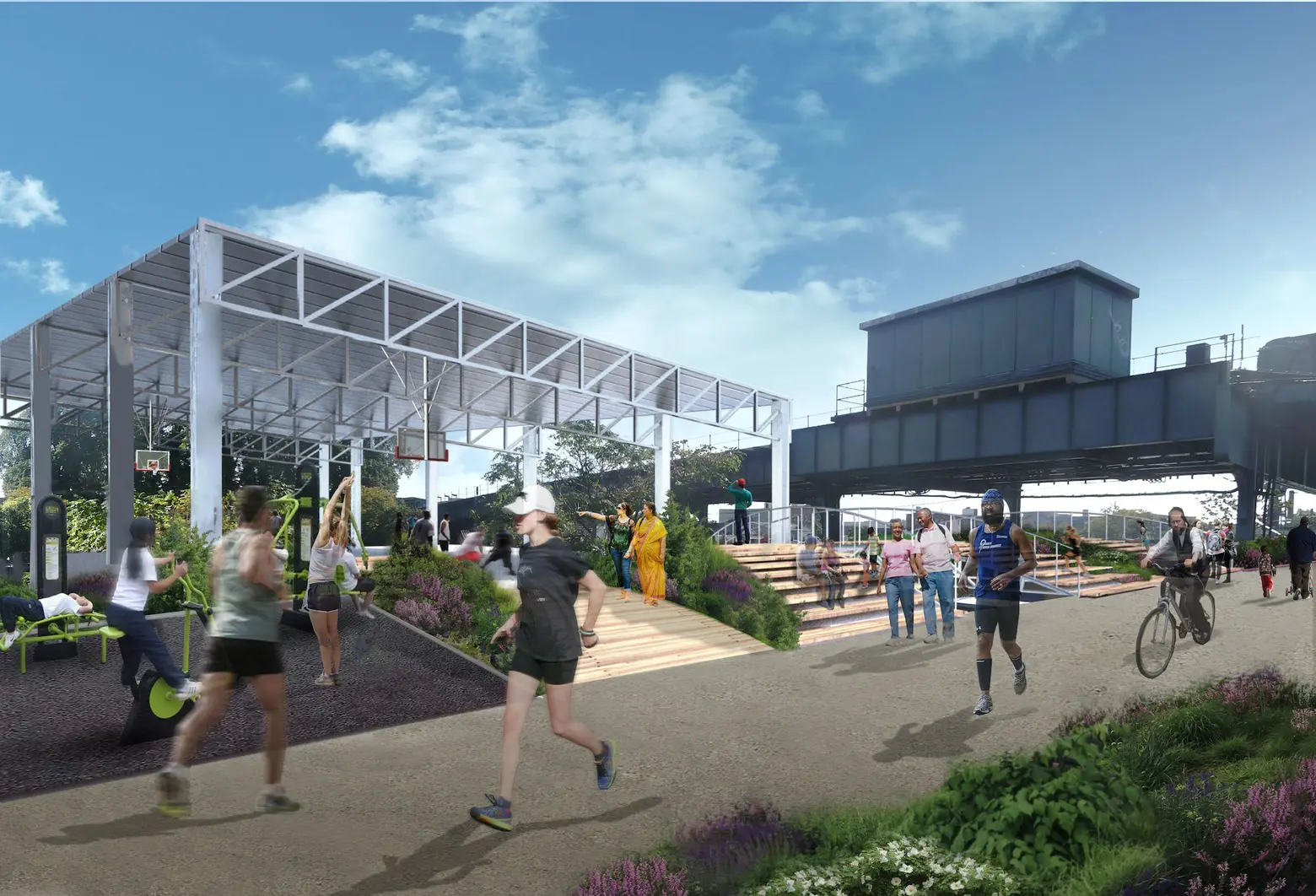
The QueensWay plan includes six separate zones of the park, with areas for activities like walking and biking distinct from play spaces with exercise equipment and cultural experiences. The Met Hub sits north of Forest Park and next to the Metropolitan Expeditionary Learning School, and the Glendale ballfields. The plan includes outdoor nature classrooms near the school, food concessions, batting cages, and bleachers by the ball fields, and space for a farmers market near the high school.
Supporters of the QueensWay say more than 300,000 people would live within a mile of the new park and more than one million would visit annually.
“This is a historic and remarkable moment for those living, working, and visiting central Queens. Today, after decades of grassroots advocacy, the work begins to transform these seven miles and 47 acres of greenway into space our communities can enjoy,” Travis Terry, president of Friends of the QueensWay, said.
“When the QueensWay is completed, community organizations and schools will be enhanced; neighborhoods will be re-connected; social and cultural programs will emerge; local businesses will get a much-needed boost; environmental conditions will improve air quality and reduce flooding; and children, seniors, and residents will finally have a safe and beautiful place to bike, jog, or take a stroll.”
Not everyone is on board with the new park. A second proposal that has also been considered calls for reactivating the abandoned railway for transit. The QueensLink would extend the M train from Rego Park to the Rockaways for faster commutes and travel time between Queens’ neighborhoods, while still providing park space.
The MTA has not shown much interest in reactivating the rail line; the agency estimated the project would cost $8 billion and serve 47,000 riders per day. As Streetsblog reported, supporters of the QueensLink said a full extension to the Rockaways and an extension of the G line to Forest Hills could see roughly 225,000 daily riders. Last month, several Queens pols signed a letter asking Adams and Gov. Kathy Hochul to study the feasibility of the Queens Link.
“QueensLink and its supporters are dismayed to hear about the backroom deal made to block transit equity for residents of Queens by converting the former Rockaway Beach Branch rail into a park,” the QueensLink campaign said in a statement after the mayor’s announcement.
“For years, QueensLink has called for this city-owned right-of-way to be used for both transit and park space. Building the park, known as the QueensWay, would block any future use of transit on this line and deprive residents of southern Queens of a faster commute, less traffic, while reducing pollution and carbon emissions.”
In a statement to the New York Post, MTA spokesperson Eugene Resnick said: “Nothing in the City’s plan for QueensWay will impact any future MTA transportation initiatives.”
RELATED:
Get Insider Updates with Our Newsletter!
Leave a reply
Your email address will not be published.
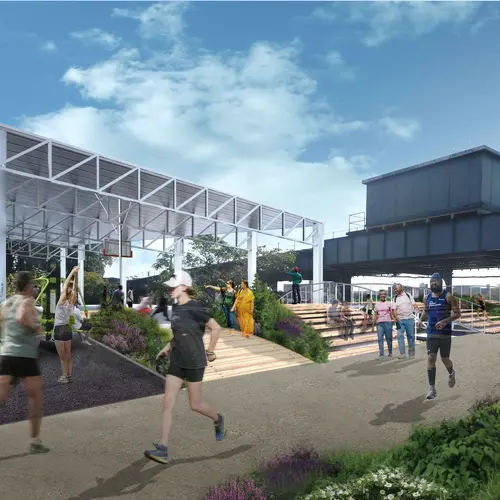
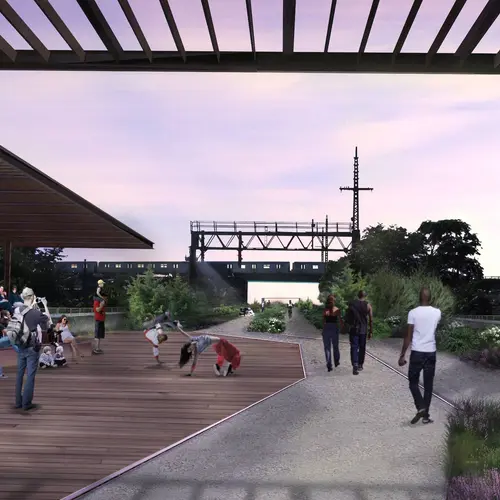
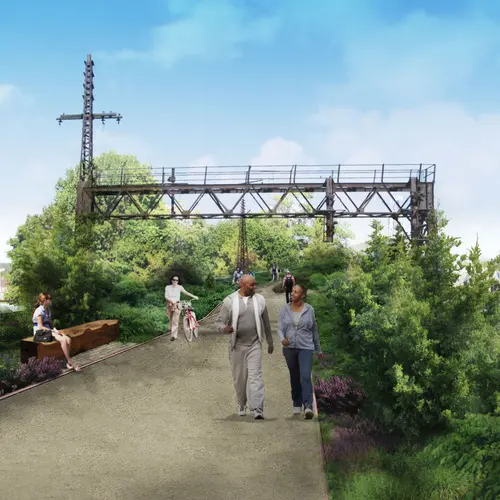

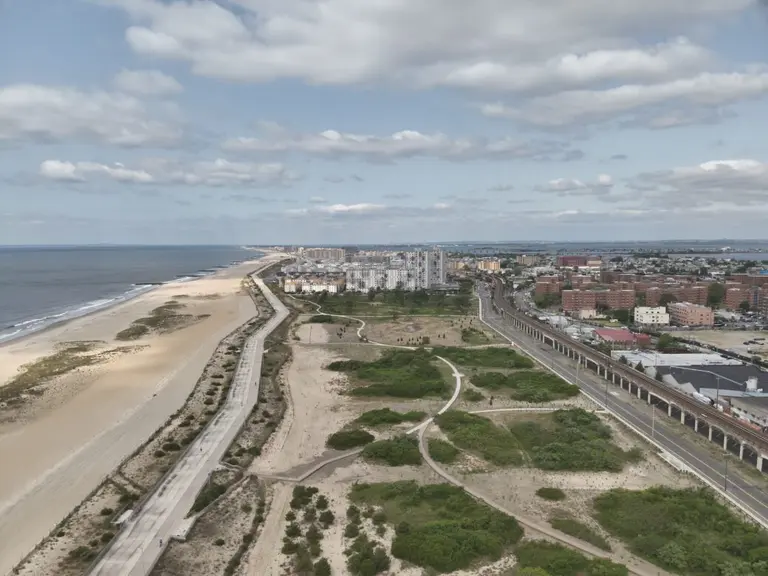
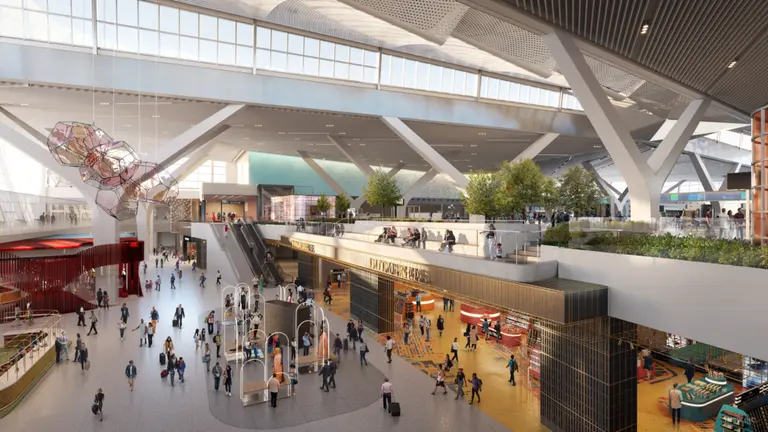
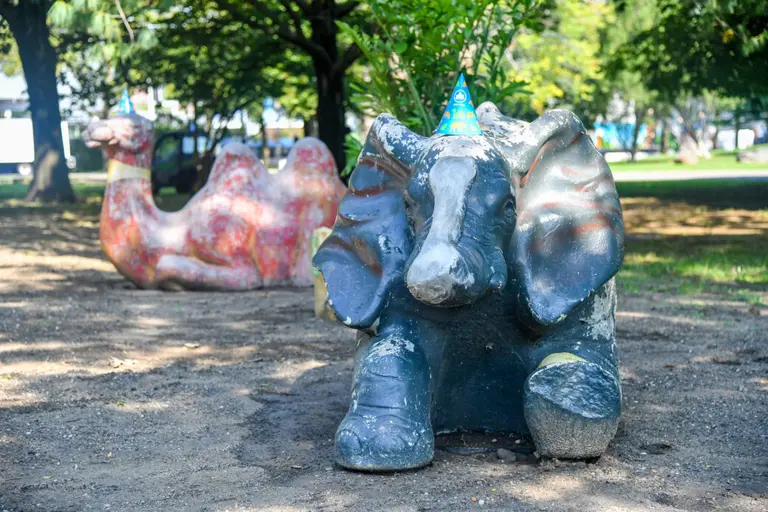
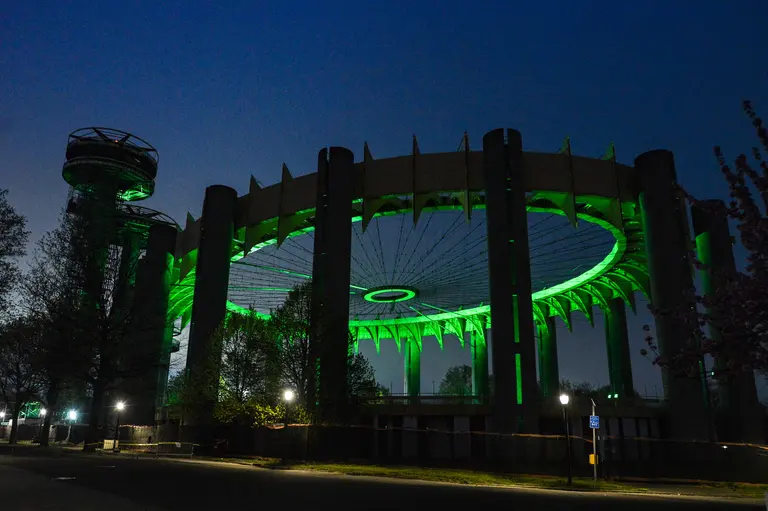
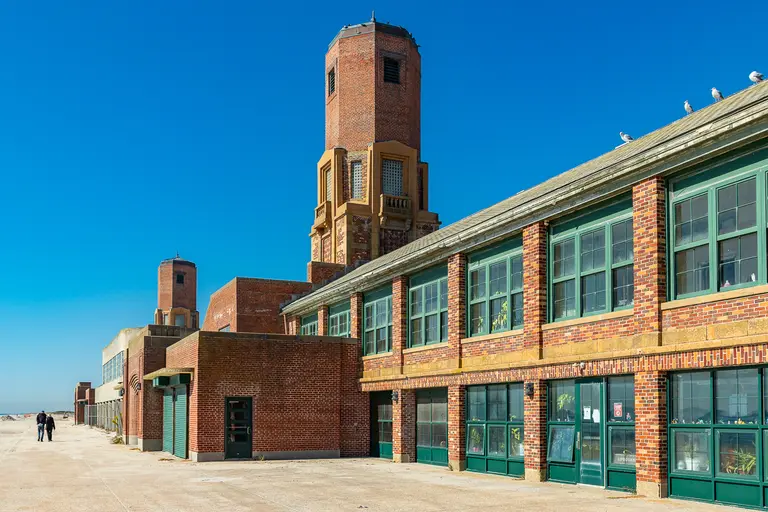





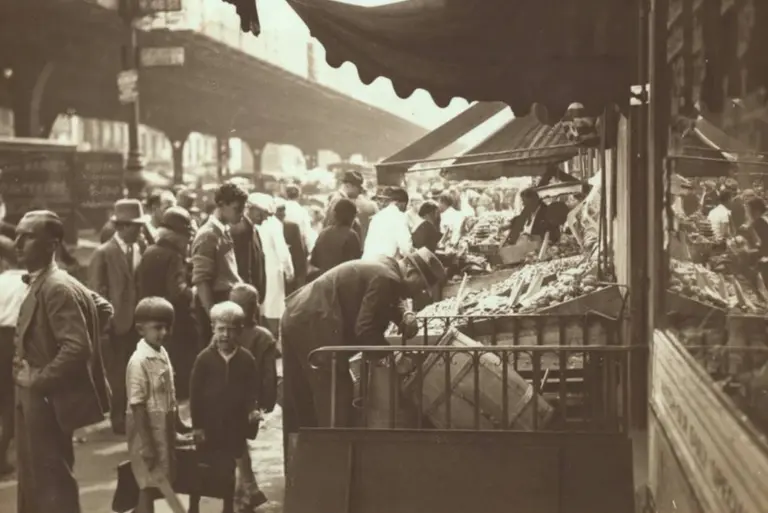
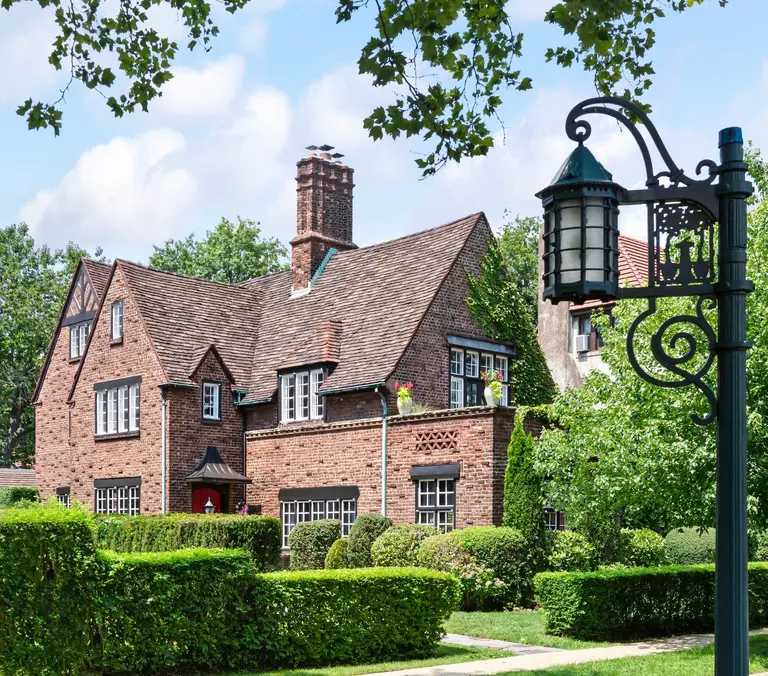
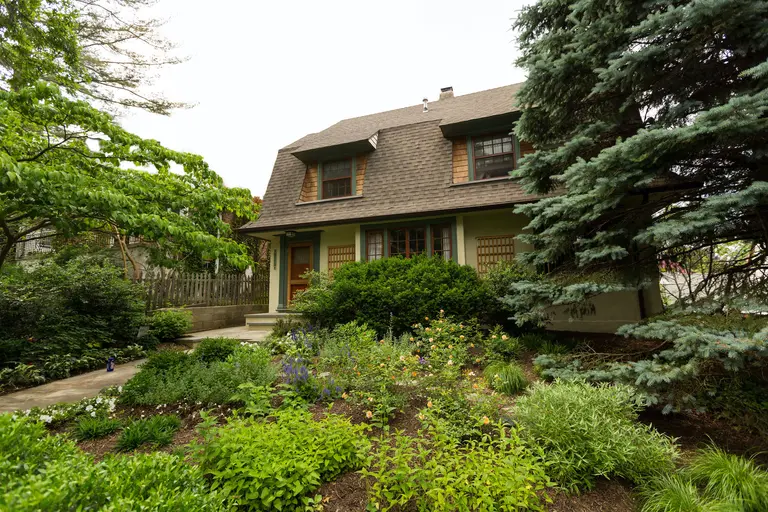
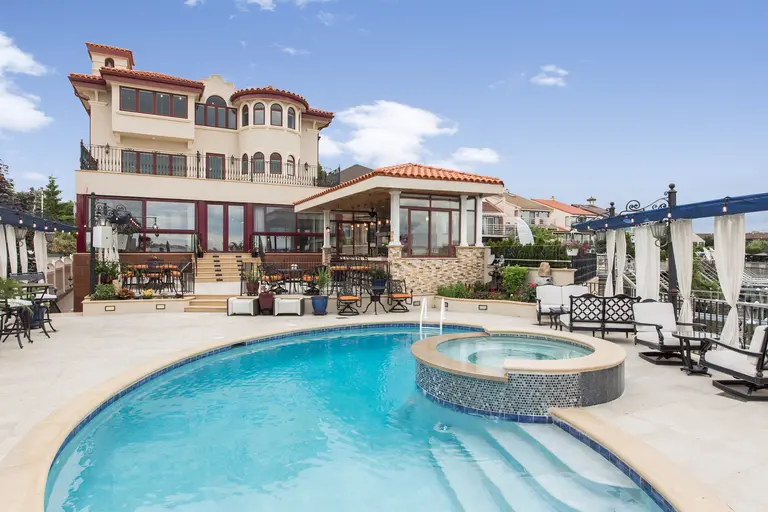
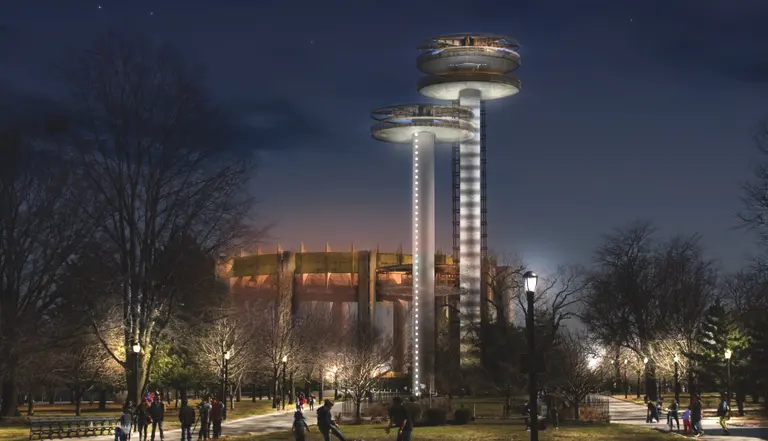
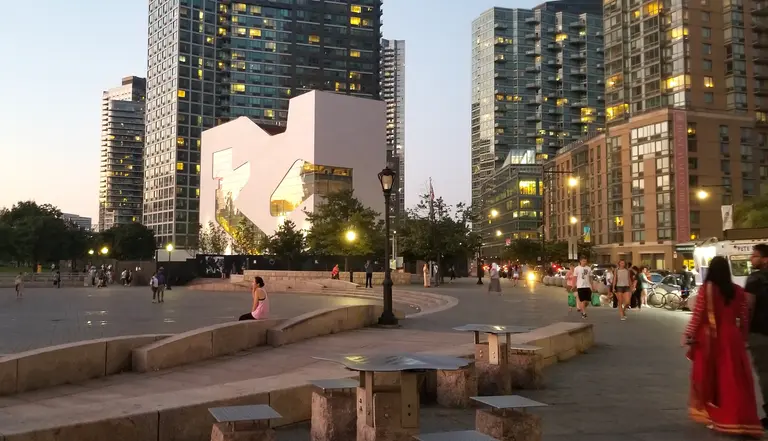












Why is this particular park project moving forward on this particular skinny strip of land at the very same time the MTA is studying it for reuse? Something’s rotten in Denmark and City Hall.